Circuit to the street ideal drives tyre tie-up
/Bridgestone has re-entered national motorsport as tyre supplier and title partner of the just-started Toyota GR86 Championship.
Read MoreBridgestone has re-entered national motorsport as tyre supplier and title partner of the just-started Toyota GR86 Championship.
Read MoreAll sorts of amazing cars have featured at this year’s Festival of Speed, but those reaching into the future created the biggest buzz.
Read MoreCould Kiwi hero Hayden Paddon be back in a full-blown WRC car for Rally New Zealand?
Read MoreThe subject of so many words, photographs and films now has its own song.
Read More
haydon paddon’s groundbreaking electric rally car, pictured during construction, will be fully revealed tomorrow. It is based on the Hyundai Kona electric car, pictured below.

THE public unveiling of Hayden Paddon’s highly-anticipated Hyundai Kona electric rally car tomorrow is being accompanied by a review of MotorSport NZ regulations to encourage electric vehicles in competition.
Motorsport’s national body says it is supportive of including EVs in competition and 18 months ago it established a Working Group to produce guidelines for their inclusion. The regulations are now at a final draft stage.
``The draft guidelines were to be released a couple of months ago but the United Kingdom recently published their regulations and guidelines so we are reviewing some of the differences,’’ said Terry Carkeek, Motorsport NZ technical manager.
``We hope to have something published by the end of November.’’
EVs can already be accommodated in some events but Carkeek says car clubs wishing to invite any battery-compelled cars to an event should contact Motorsport NZ in the first instance.
``We will then provide them with requirements based on the event and the type of vehicle being used. To date, I think we have had three requests all of which we have been able to provide guidelines for,’’ Carkeek said.
``We currently don’t see any need to limit what competition EVs may run in. There is likely to be a requirement for the venue owner to approve the use of EVs to compete on their property and we would also require the approval of the local fire and emergency agency.’’
He said EVs could compete in a separate category but there is also potential to create an equivalency formula to allow competition against conventional powertrains.
``We currently believe that standard, largely unmodified series production EVs, will be relatively easy to include in a number of motorsport disciplines,’’ said Carkeek.
``We also believe that professionally designed and constructed EVs, like Hayden’s Hyundai, should also be relatively easy to include in some events.
``For EVs that have had the high voltage system modified, we will be looking to establish a certification process for those modifications. We have had initial discussions with LVVTA with a view to using their existing standards to accept those vehicles.’’

TOM SHORT has been a pioneer of electric drive within the sport of drag racing, fronting with modified classic cars including this LH Torana.
Kiwi drag racing has been an early EV adopter with a Tesla Model S and Nissan Leaf appearing at recent Meremere Dragway street car events.
And Taupo engineer Tom Short has built four electric drag racing cars and received a mixed reception in the straight-line sport.
Short has modified classic cars – a Datsun 1200 Coupe, an LH Torana, HT Holden Ute and most recently a 1970 LC Torana GT-R – by installing battery packs and an electric motor.
He achieved early success winning the NZ Drag Racing Association (NZDRA) Super Street national points title in the 2014-15 season with the Datsun. Other than the fact they are near-silent there is little about the performance - or appearance - of Short’s cars that identifies the pioneering role they have played in Kiwi motorsport.
Short said EVs were banned after this title win, re-admitted and then banned again by the NZDRA. At present his car is welcome at events run under International Hot Rod Association (IHRA) rules.
``They [NZDRA] said the ban was for Health and Safety reasons. Some people don’t like change,’’ said Short.
Another area of New Zealand EV competition has been in moto trials.
A small number of Electric Motion electric trials bikes were introduced several years ago. They’ve been used in competition but are now mainly used by riders for training.
At present the big area of EV interest is in mini trials and trail riding with the Oset brand of electric off-road bikes becoming a popular choice for 3-12-year-old riders.
Editor’s note: The end result of a project announced two years ago, Paddon’s car is based on the Hyundai Kona, a compact fully-electric crossover that has been in the market for three years. The rally edition is a world-first for the type and delivers with four-wheel-drive, raised suspension and all the other addenda required for rallying.
It has been developed by the driver and a handful of employees, all hand-picked Kiwi engineers, working from a lock-up at Highlands Motorsport Park at Cromwell. Hyundai New Zealand, the University of Canterbury, Yes Power have supported. STARD, an Austrian racing team that specialises in electric rallycross cars, supplied the battery, inverter and motors.
The car is being unveiled tomorrow night in Auckland at Hyundai NZ’s headquarters.

GEOFF Ridder was on duty for MotoringNZ.com when national level motor racing resumed in the North Island yesterday.
The opening round of the Golden Homes North Island Endurance Series brought a Hampton Downs Three-Hour victory for Taranaki’s Glenn Smith teamed with Kiwi international racer Chris van der Drift in the SBT Motorsport McLaren 650S GT3.
The McLaren qualified on pole position and although dropping to third position in the opening hour, the team ran an untroubled race to build a two-lap advantage during the second half of the enduro to complete 162 laps.
Andrew Fawcett and Sam Fillmore finished two laps back in their Audi R8 LMS after completing a late race pass on the Heart of Racing Aston Martin Vantage GT3 of Brazilian Alex Riberas and Kiwi drift star Darren Kelly. The Aston spent two stints leading in the opening 90 minutes of the race.
Behind the trio of GT3 cars the V8-engined Audi A5 of Matt Dovey and Jono Lester finished fourth. The 3-hour race had 18 starters with nine teams classified as finishers.
There was double Hampton Downs endurance success for McLarens with John de Veth driving Glenn Smith’s other 650S to victory in the 1-Hour race with Porsche GT3 racers Matt Whittaker and Callum Hedge completing the podium.
Now reduced to two rounds in 2020 due the Covid-enforced calendar changes, the North Island Series concludes at Pukekohe on Saturday October 24.
In between the endurance races there was also non-championship Best Bars Toyota 86 action and the completion of the 2019=20 Ryco 24.7 V8 Utes Series.
Series champion Peter Vodanovich was unbeaten in the Toyota 86 action with three narrow wins ahead of Connor Adam while Matt Spratt (two wins and one second) and Andrew Porter (one win, two seconds) shared the V8 Ute honours.
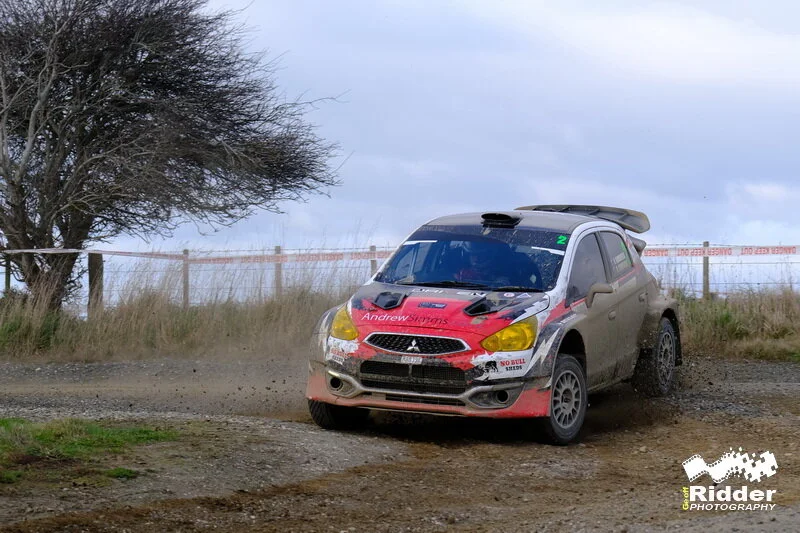
Matt Summerfield on his way to victory in the Mitsubishi Mirage AP4
all images:Geoff Ridder
NEW Zealand rallying restarted today with Rangiora’s Matt Summerfield claiming victory in the 20th annual Catlins Coast Rally.
The six-stage event in coastal South Otago featured 81 crews and very quickly became a duel between top-seed and four-time winner Andrew Graves (Gore) and second seeded Summerfield.
Graves won the opening stage in his Mitsubishi Lancer Evo3 before Summerfield recorded a string of four fastest times to propel his Mitsubishi Mirage AP4 into a 52 seconds lead.
A more conservative run through the final stage allowed the final margin to settle at 38.8s in Summerfield’s favour.
The event was only the second gravel rally staged in New Zealand during 2020 due to recent Covid-19 restrictions. The season-opening Westland Rally had been completed in mid-March.
Hayden Paddon’s objective of running on pace notes ahead of the field as a test session for his Hyundai i20 AP4 proved short-lived and the former WRC star only completed two stages before retiring. His stage times weren’t published.
While Summerfield and Graves raced clear by more than three minutes a late reshuffle of the leader board saw Kaikoura’s Regan Ross (Ford Fiesta R5) climb to third place ahead of Balclutha’s Dean Bond (Mitsubishi Lancer Evo6.5) as Josh Marston (Christchurch) slipped from third to fifth in his Holden Barina AP4.
Another strong drive on the Catlins roads by Christchurch driver Deane Buist was rewarded with sixth overall and he led home the two-wheel-drive competitors in his Mk2 Volkswagen Golf GTI.
Reigning New Zealand rally champion Ben Hunt (Auckland) had a low-key outing in a Subaru Impreza H6 lease car and finished 11th.
The next rally on the New Zealand calendar is the Maramarua Clubmans event on Sunday, September 6.
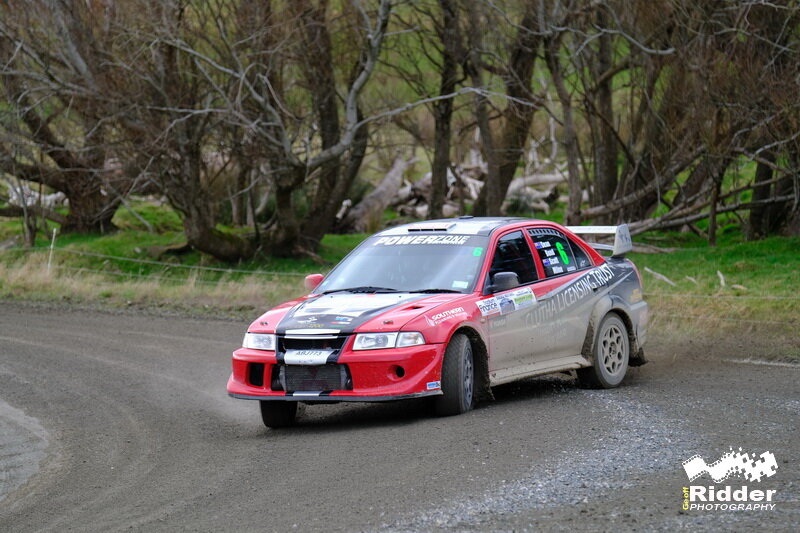
Balclutha's Dean Bond finished fourth in his Mitsubishi Lancer Evo6.5
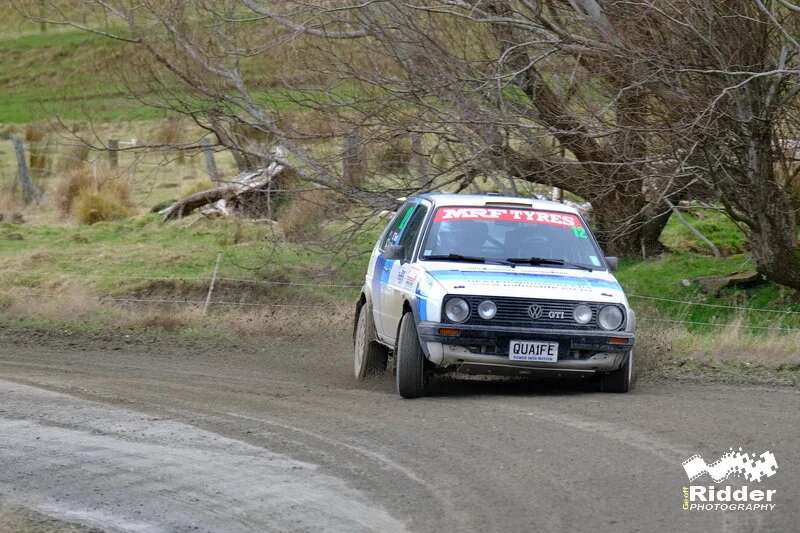
Deane Bust led home the two-wheel-drive field in his VW Golf GTI
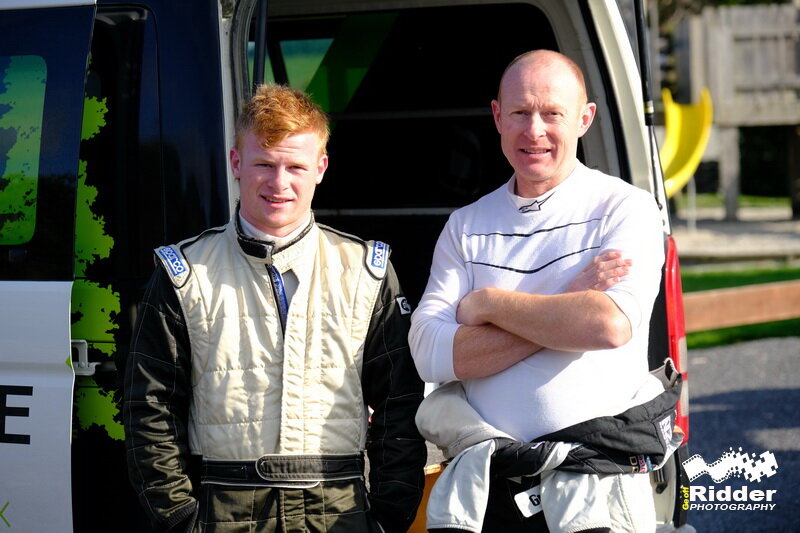
Top-seeded Hayden and Andrew Graves finished second after leading the early stages

Late-entry Regan Ross climbed to third place in his Ford Fiesta R5
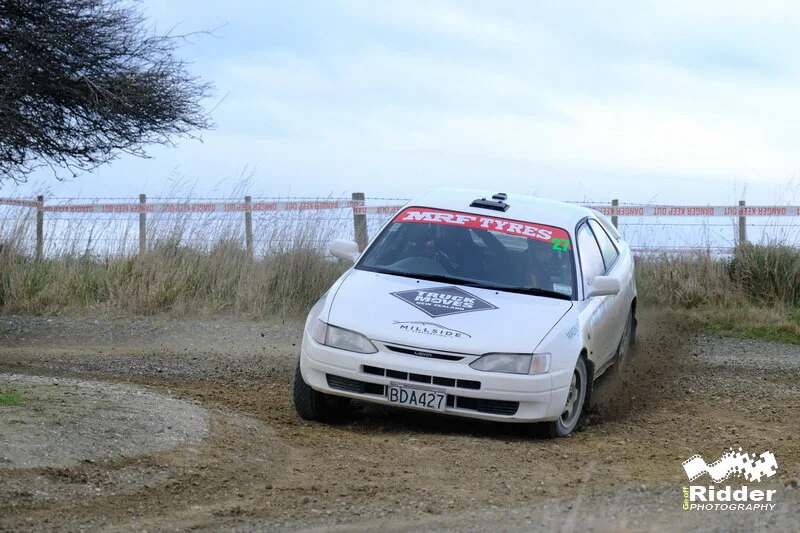
1600cc class winner Richie Chadwick drive to 14th overall in his Toyota Levin
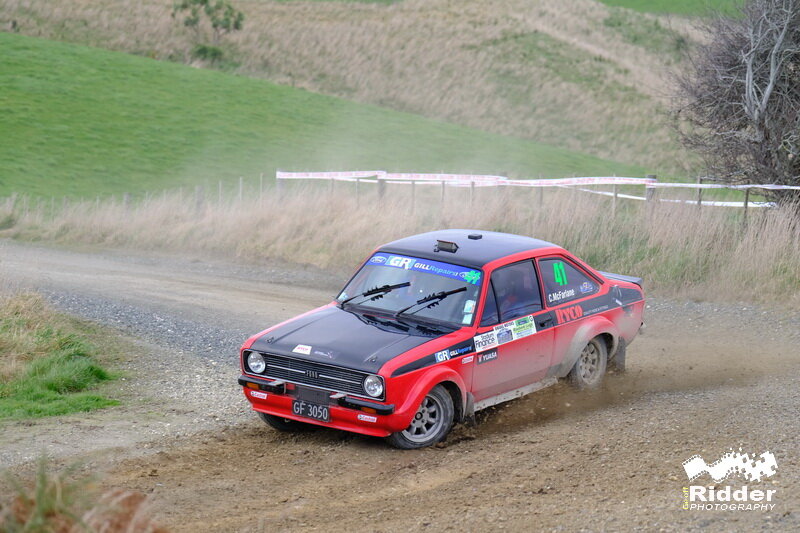
Stephen Gill won the Classic category in his Nissan-powered Ford Escort
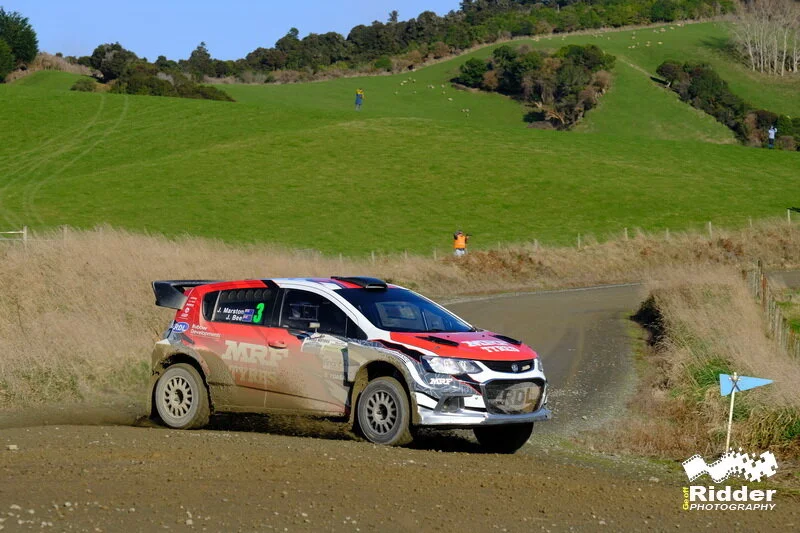
josh marston races through the Catlins countryside
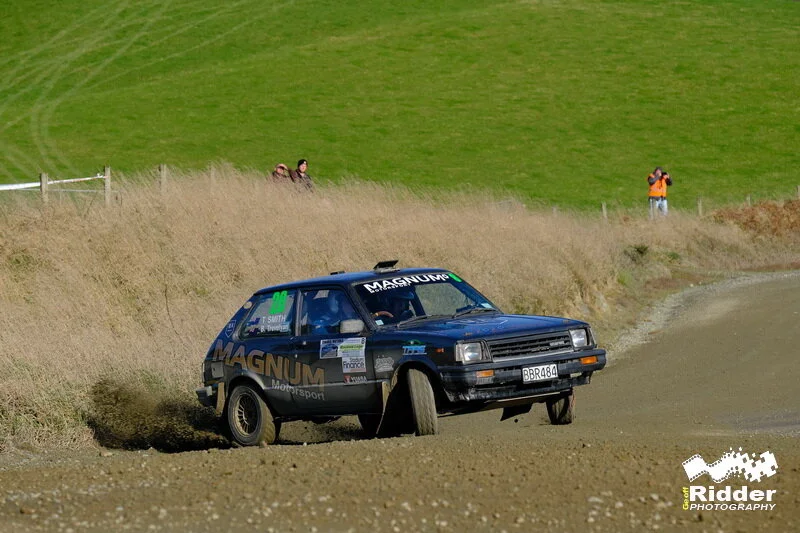
Tim Smith on a spectacular run to 16th place in his Toyota Starlet
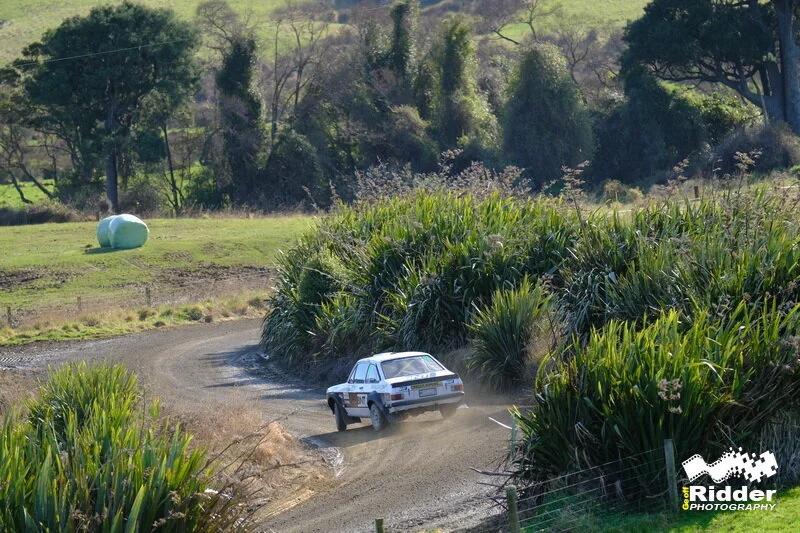
Aucklander Kingsley Jones left his Skoda Fabia R5 at home and drove a Classic Mk2 Ford Escort

Hyundai driver Hayden Paddon will make his first appearance at a local rally since winning the South Canterbury event in June 2019.
Photos: Colin Smith
HAYDEN Paddon and his NZ title-winning Hyundai i20 AP4 make a return to local rallying this weekend with no chance of winning anything.
Paddon and co-driver Samantha Gray will race ahead of an 83-car field when the South Island’s Mainland Rally Series returns to action in South Otago with the 20th edition of the Catlins Coast Rally.
The former World Rally Championship star is using the event as a test session and rather than enter the rally and be eligible for a result he’ll make pace notes for the six special stages.
“My last blind (non pace-noted) rally was 15 years ago and I’m not quite brave enough to attempt one now in this kind of car,’’ said Paddon.
“So we will run at the front of the field and on pace notes. The objective is to blow the cobwebs out and test some new development ideas on the car.
“My last rally was WRC Rally GB in September, so it’s almost a year ago. And my last rally in the i20 was South Canterbury just over a year ago.’’
While New Zealand’s WRC plans and the 2020 National Rally Championship have been victims of the COVID-19 pandemic, grass roots rally sport is making a comeback.
The Catlins Coast Rally entry list is headed by four-time winner Andrew Graves (Gore) in a Mitsubishi Lancer Evo3 who will start ahead of a trio of AP4 cars piloted by Canterbury drivers Matt Summerfield (Mitsubishi Mirage), Josh Marston (Holden Barina) and Robbie Stokes (Ford Fiesta).
Last year’s Catlins winner Garet Thomas (Darfield) is seeded fifth in his Subaru Impreza ahead of Balclutha’s Dean Bond (Mitsubishi Lancer Evo6).
Heading the two-wheel-drive ranks are Marcus van Klink in his tri-rotor Mazda RX-8, Deane Buist (VW Golf GTI) and the Ford Escort of Mike Verdoner.
The rally starts from Owaka at 10am Saturday with the six-stage route totalling 152km of competitive driving. The cars return to Owaka twice for servicing and the 3.40pm finish.
Meanwhile the northern region rally calendar re-started with the South Auckland Car Club’s Maramarua Forest Rallysprint on Sunday.
The event was the fourth round of the ABC Pipe Fitters Northern Rallysprint Series, one of the few 2020 motorsport series left relatively intact in spite of COVID-19 precautions.

Darfield's Garet Thomas was the Catlins Coast Rally winner last year in his Subaru Impreza.
The series had completed three rounds prior to the Level Four lockdown and while dates have changed the series is set to complete its scheduled six rounds at the original venues.
Young Aucklander Jack Hawkeswood was quick on the 9km forest stage in Maramarua on Sunday in his Mazda2 AP4 car - improving on each of his five timed runs and setting his quickest time in the final run-off to pip Matt Jensen (Mitsubishi Lancer Evo9) by almost seven seconds.
Former series champion Graeme Featherstone (Te Aroha) was third in his Mitsubishi Lancer Evo7 while Aucklander Haydn MacKenzie – a former BNT V8s Touring Car racer - continued to show promise on his switch to gravel surfaces taking fourth place in his Mitsubishi Lancer Evo9.
The remaining Northern Rallysprint Series rounds are the Hamilton Car Club’s Hoddle Rd event near Otorohanga on August 23 and the Thames Valley Car Club Piakonui Loop Rd event near Matamata on October 4.

Young Auckland driver Jack Hawkeswood won the fourth round of the Northern Rallysprint Series on Sunday in the Maramarua Forest.
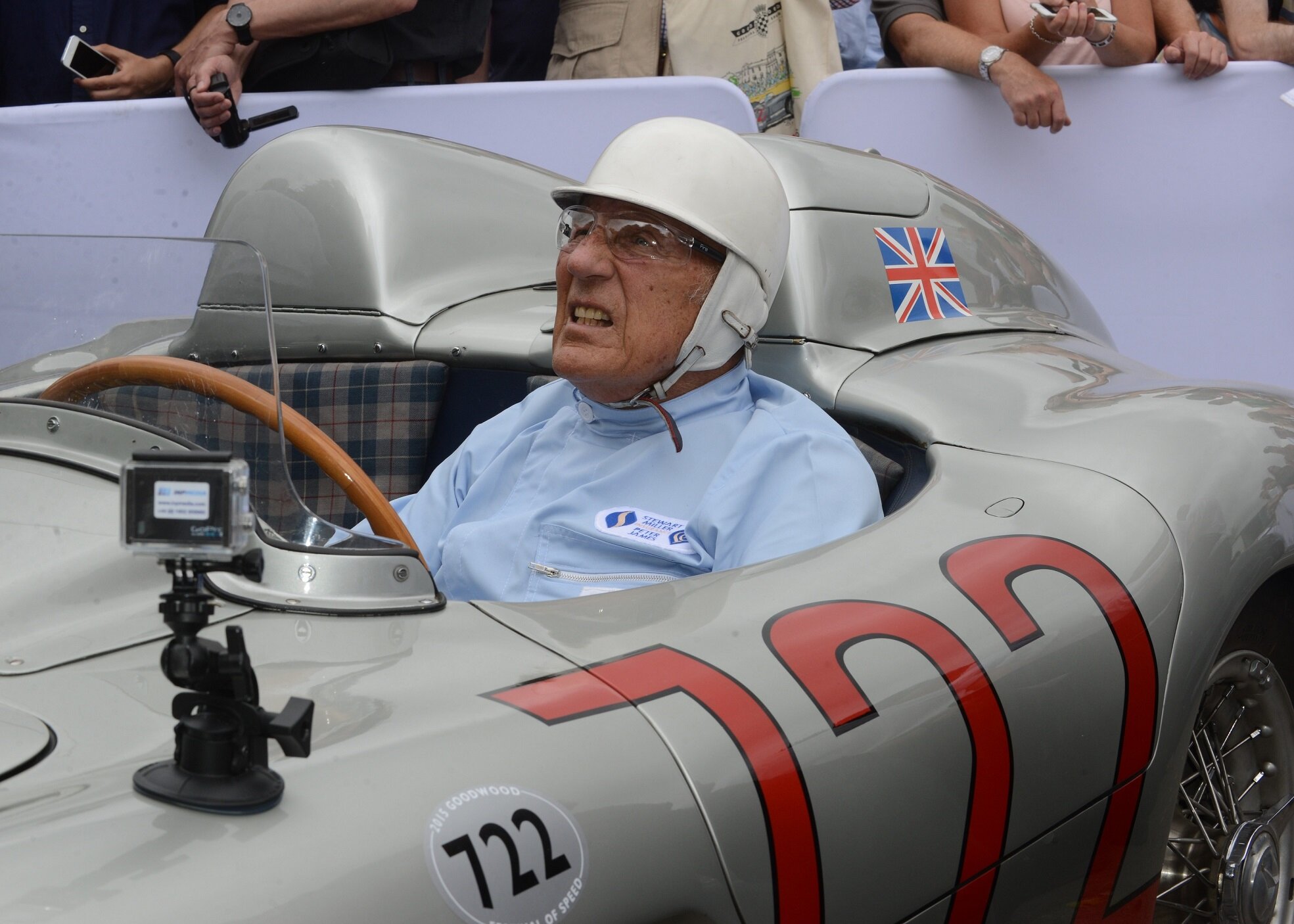
Rally crews spend weeks on the road writing, checking and competing with detailed pace notes. The passing of Sir Stirling Moss at Easter reminds us where that began.
Along with 16 Formula 1 GP victories and countless wins at circuits throughout the world, Moss and co-driver Denis Jenkinson are also credited for the first successful application of what became known as pace notes.
Moss had made three previous attempts at the Mille Miglia - the annual 1000-mile road race around Italy - before he left the start line at 7.22am on May 1 1955 as part of the Mercedes-Benz factory team.
Aware that only one non-Italian driver had ever succeeded in the Mille Miglia, Moss and ``Jenks’’ had completed detailed preparations as a counter to the local knowledge of the Italian drivers
A passenger was permitted in the Mille Miglia and mainly they served as a navigator or riding mechanic or sometimes in a co-driver role sharing a stint at the wheel.
A journalist, Jenkinson was also familiar with the demands of teamwork at high speed as he had been a world motorcycle sidecar champion.
Prior to the race Moss and Jenkinson made multiple reconnaissance runs around the course, carefully detailing the dangerous corners and hazards as well as the blind corners and brows that could be taken at high speed if the driver trusted the information.
In their finished form these notes were written onto an 18-foot roll of paper that was wound into a purpose-made metal holder. Jenkinson scrolled through the notes, checking progress against the large kilometre stones at the Italian roadside. You can see footage of the device and how Jenkinson worked it in today’s video.
A pace note book used by modern co-drivers wasn’t an option. The Mercedes-Benz SLR 300 was an open sports car with a small windscreen. Rain would have turned paper into pulp.
And there was no intercom either. In car capable of 170mph - with a straight-eight engine based on the Mercedes W196 Formula 1 car with open exhausts - Jenkinson delivered the instructions to Moss by a series of hand signals.

Modern in-car WRC footage offers an insight into the perfected pace note science from the security of a closed cockpit, with a full roll cage, harness and a sophisticated intercom system.
The Moss and Jenkinson system may have been rudimentary but it represents the first successful application of pace notes and of making a car quicker from A to B on a partially known piece of road because of the cooperative efforts between driver and navigator.
Moss and Jenkinson won the 1955 race – beating team-mate Juan Manual Fangio by 32 minutes - at a new record average speed of 99mph that remained unbeaten when the Mille Miglia was banned after 1957.
Moss actually rated the 1955 Mille Miglia win as his greatest success.
``Even now, so many years afterwards, the memory is fresh – of all the races I entered, and finished, and even those I won, I can’t find another to compare with it,’’ he wrote in the 1974 compilation My Greatest Race edited by Adrian Ball.
RIP Sir Stirling Moss. Not only a motor racing legend but part of a pioneering duo whose innovation influences every major rally today.
# We welcome Colin Smith as a contributor to MotoringNZ.com and acknowledge that this first story seems particularly appropriate. In addition to being a highly-talented motorsport and motoring writer, he’s also a respected rally co-driver.


“He was definitely an ace of aces – a real hero.
“And he had terrific charisma … he was very complimentary about the New Zealand drivers he raced against here.”
In discussing Sir Stirling Moss, who died at 90 years old at his London home yesterday, New Zealand motorsport expert Scott Thomson (below) can speak with particular authority.
The renowned Masterton motor-racing historian whose works include a biography of Ron Roycroft, one of the drivers Moss competed against in this country, interviewed the Formula One icon on several occasions.
Their last meeting was when Moss came out to open a new wing of Wellington’s Scot’s College, about 30 years ago, where in an interview about the post-war racing cars the retired racer’s acute memory for detail shone through.

Thomson also witnessed Moss race here almost annually from 1956 to 1962, a period when he claimed the country’s most significant track racing prize, the New Zealand Grand Prix.
The NZGP title went to Moss on three occasions – in 1956 with a Maserati 250F (below) – the same kind of car in which our own Chris Amon’s talent would shine so bright a few years later - then in 1959 and 1962, respectively in a Cooper Climax T45 then a Lotus 2, always with the racing number 7.
The latter victory, on January 6, was one his last big one – three months later came the dreadful accident in his homeland that forced Moss into retirement.
A massive crash whose cause remains a mystery to this day left him trapped in wreckage for 40 minutes, in a coma for a month and kept him out of racing for a year. When he finally returned to a race car, he determined he lacked the edge needed to win, so decided to retire at just 32.
Thomson notes wryly that the smash that ended what had been a hugely promising international motor-racing career was also on Easter weekend.
Moss enjoyed a halcyon ascendancy that delivered 16 wins from 66 F1 GP starts and numerous other stunning victories, including his famous drive for Mercedes in the Mille Miglia, an endurance road race in Italy renowned for being particularly tough and lethal.

That third NZGP win provided another fabulous example of his ability – contested in hugely challenging conditions, with rain so heavy it flooded sections of the Ardmore airfield circuit south of Auckland, and against a stellar field including the cream of early 1960s’ F1 talent.
Yet the entire field was lapped with what seemed such an easy mastery fellow racer John Surtees told reporters in an immediate post-race comment “he’s just not normal.”
It was no disparaging put-down. Simply, as a subsequent history of that day would relate, an expression of awestruck admiration from a man, relegated to second that day, who two years later would become F1 world champion, the only man to win world titles on motorbikes and in Grand Prix cars.
As the history of that day related: “… while others were slithering and sliding and spinning, Moss was imperturbable. He had only one mishap, when the Lotus aquaplaned in the corner on to Pit Straight.
“At one point he had slid his goggles down and shielded his eyes with his hand, steering the Lotus with the other hand and at undiminished pace.”
It’s because of occasions such as this that mean history merely recalling Moss as one of the best drivers of all time to have never won a Formula 1 World Championship doesn’t tell the full story.
Thomson certainly says that’s almost an unfair assessment, and not simply because it overlooks that the Briton did achieve two world championships, a manufacturers’ title for Vanwall in 1958 and a sports car title for Aston Martin the next year.

With deference to Jim Clark, who might – if they had ever gone head-to-head when each was at the height of their abilities – proven the better Formula One racer overall, Thomson considers Moss was probably the best British driver in all-round ability “and one of the greatest overall.” (On that scale, he notes Moss always whenever asked about rankings always reckoned Juan Manual Fangio was the best ever).
Like the Scotsman, Moss would drive almost anything, but perhaps had better skills as an all-rounder as “he was a good rally driver, obviously very good sports cars and in endurance races – where he was just so fast he generally became the hare they sent out to lure the opposition into breaking their machinery into trying to catch him – and, of course, he was very good in Grand Prix cars.
Thomson admits his views might seem a little coloured as he was always an unabashed Moss fan, starting from the days when, as a teenaged fan, he received a personal reply to a letter sent to the Englishman prior to that 1956 New Zealand debut expressing hope Dunedin’s street race would be included in his itinerary (it wasn’t). The letter Moss penned in reply, and the autographed photograph included with it, remain especially treasured.
Thomson missed seeing Moss run the NZGPs, but did see him perform at the now defunct Levin circuit and also at Invercargill’s Teretonga.
Happening across a weekday low-key test session at the Southland track provided insight into why the Brit had the measure of six current or recent Formula 1 drivers - Jack Brabham, Bruce McLaren, Surtees, Lorenzo Bandini, Roy Salvadori and Ron Flockhart – in 1962.

Drawn to the track by the sound of racing engines on a day when it would normally still be deserted, he found Moss, Brabham and McLaren. The first two were pounding ceaselessly around the track, perfecting their lines, being watched by the New Zealander, who sat up in the sandhills and was carefully noting their turn in and braking points.
That session, says Thomson, provided good example of the perfectionism and competitive spirit that the top drivers had in common, but was especially evident from Moss.
“He was very competitive and very well-organised. This was a day when you’d might have thought you’d only see someone running in an engine but there they, were, going round and round and round refining their lines. And there was Bruce, picking up what they were doing.”
To good benefit. The Kiwi won the race ahead of the visitors.
Yet it was a good example of the Brit’s attitude (and Brabham’s too). “There was no question that, when he came to race, he came to do exactly that. Race. It wasn’t a case of ‘we’d better let Bruce win at Teretonga’. That racer instinct was there all the time.”
Moss came from good motorsport stock; his dad, Alfred, also raced and managed a feat that eluded the son – contesting and finishing the Indianapolis 500 – and his sister, Pat, was a renowned figure in rally sport.
His upbringing was tough; the family grew up during World War II and, because of his Jewish background, he was picked on at school – the taunting led him to take boxing, at which he excelled.
Post-war Britain when he began racing was a very grey place. His first mechanic, Guy Muller, was a German prisoner of war serving out his time. His early career was forged in Europe, where he found he could backpack around Europe and survive as a profession driver on his small share of the starting money he got for fronting up in a HWM. “He found he could make it work providing he didn’t eat too generously between the racing.”

Being spotted by Lofty England was his big break. Jaguar’s team manager knew talent when he saw it. “He quickly became the Jaguar team leader.”
England recognised in Moss the same special abilities and winning attitude he’d seen in the two big name drivers he’d run of the 1930s’, Prince Bira and Dick Seaman. And from thereon he was on the way.
As Thomson puts it: “Britain was looking for a hero at the time and they sure got it.”
By the time Moss came to New Zealand, he was not only a motor-racing star on the back of successes including being the current British national champion but a social scene celebrity. He knew how to play the scene but was never big headed, Thomson says.
An example. Prior to the 1956 NZGP, the Northern Sports Car Club laid on a dance to which all the drivers were invited.
“Stirling was the one who turned up and he didn’t just go to talk to people and sit at the bar.
“He went and danced. He danced with every girl in the room, I was told, starting with the not-so-pretty ones, so all the girls thought he was absolutely marvellous.”
He looked it in the big race, too. Having been untouchable in qualifying, his battleship grey Maserati was on pole and had ascended to the lead of the 320km enduro within half a lap. By his 15th circumnavigation of Ardmore, he’d lapped all but the fastest half dozen cars and soon after established a new circuit record.

At lap 85, with 15 to go, he felt rain on his goggles. Only it wasn’t. A fuel lead had broken; petrol was spraying into his face. Half-blinded, choked by fumes, he had to reduce speed as fuel sprayed directly into the cockpit. But he kept pressing on until, with eight to go, so little was left in the tank he had to pit. Thirty-six litres were dumped into the tank, the leak fixed as best it could be and he was off again.
With Australia’s Tony Gaze right behind in a Ferrari that, having been converted to methanol, was the most powerful car in the field, Moss was forced go as hard as he could. Another lap record was clocked. Two laps on, he took the chequered flag, WWII Spitfire ace Gaze right behind.
The 1959 return was more comfortable, Moss being a lap up on closest competitor Brabham at flag fall and, of course, 1962 was better still.
Yet he was never big-headed about it. Indeed, when it came to summing up his competitors, he was always quick to praise when it was deserved.
Thomson says Moss certainly held genuine respect not just for his fellow internationals but also earnest in suggesting local heroes Roycroft and Syd Jenson especially were genuinely good adversaries who would have done well anywhere. The Kiwi talent pool, in turn, learned a lot from competing against the best from overseas.
“Those races certainly did help our guys. Moss was certainly complimentary about our best and, in time, Bruce (McLaren) and Denny (Hulme, our only F1 world champion) proved Moss right.”
MotoringNZ reviews new cars and keeps readers up-to-date with the latest developments on the auto industry. All the major brands are represented. The site is owned and edited by New Zealand motoring journalist Richard Bosselman.